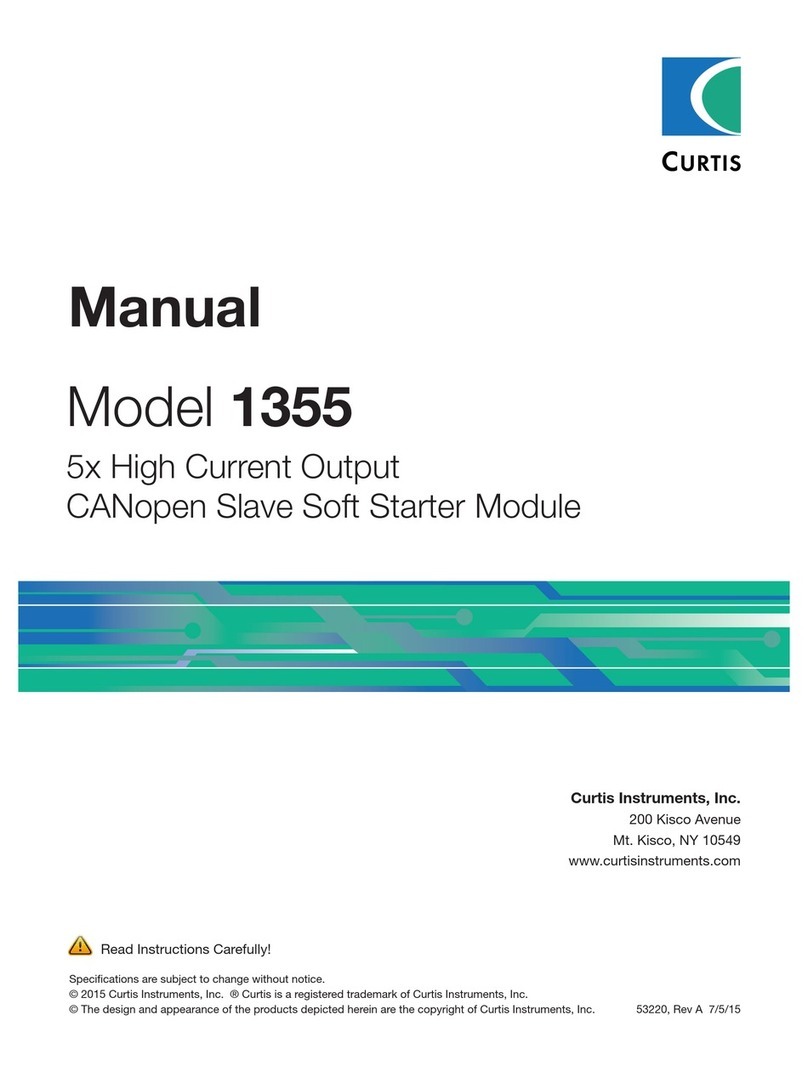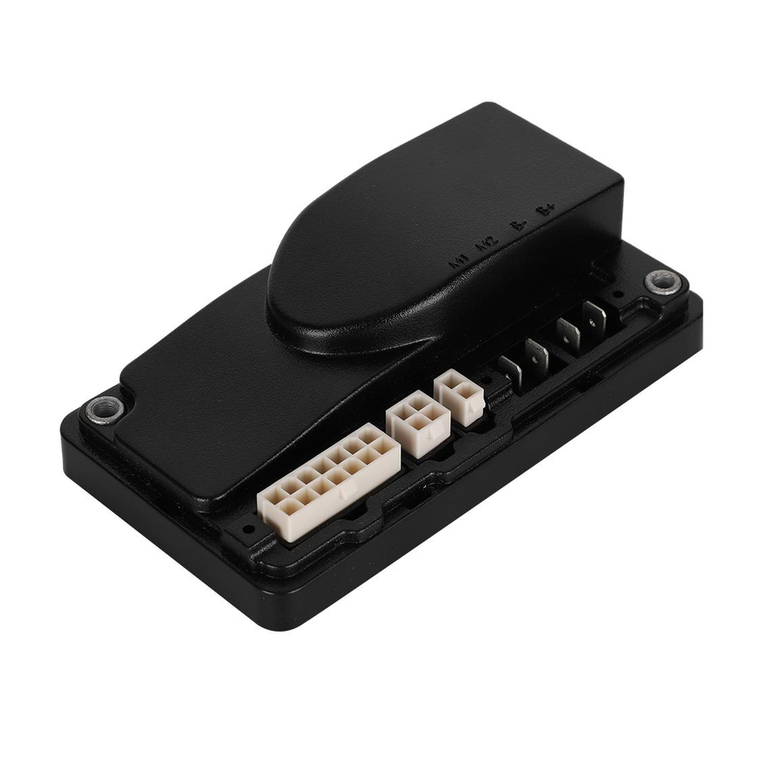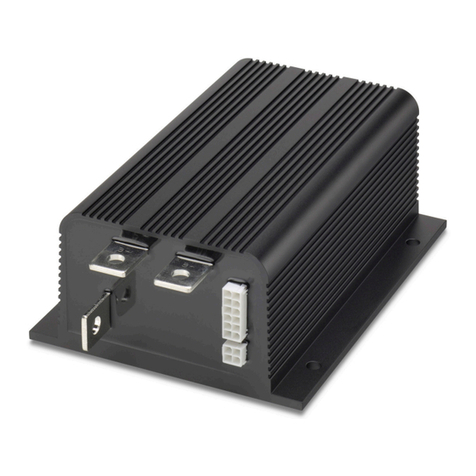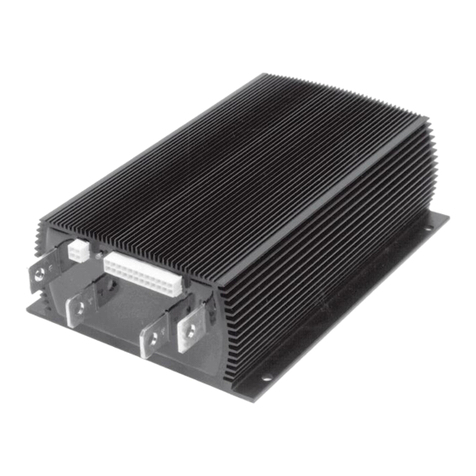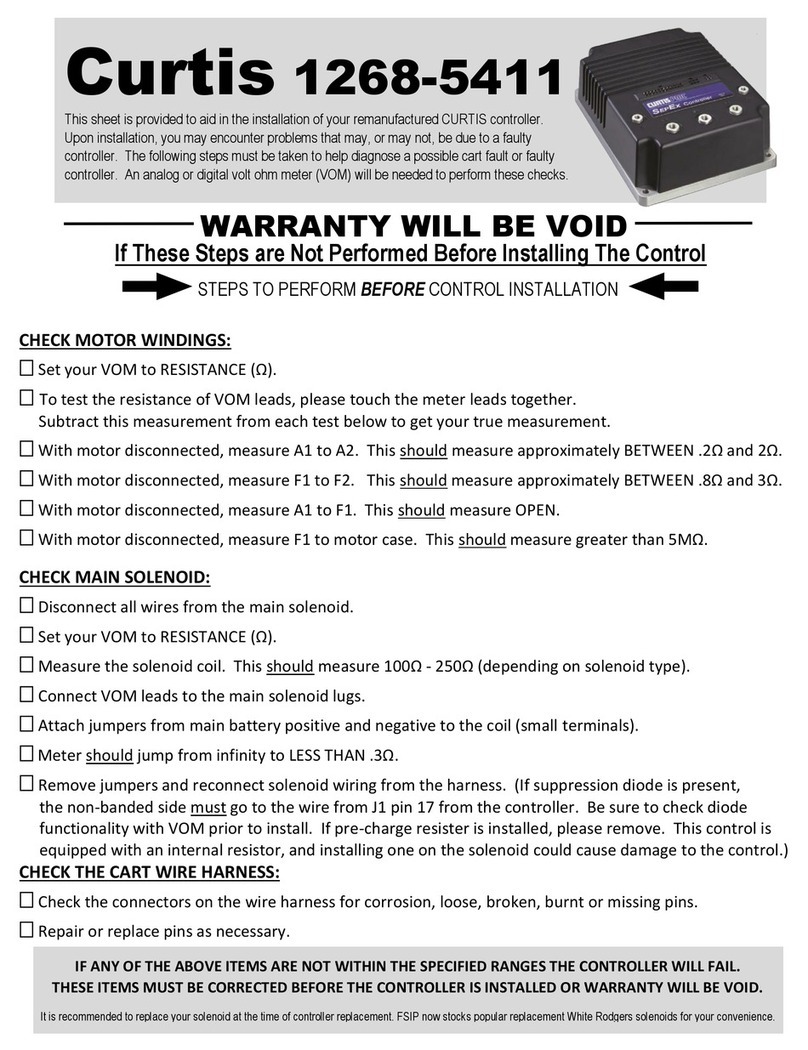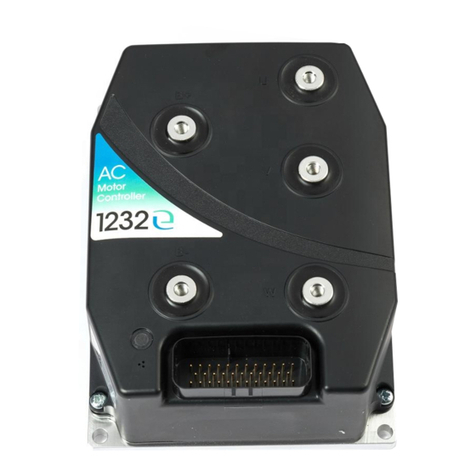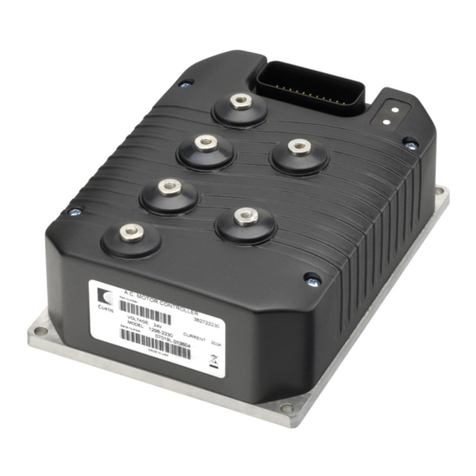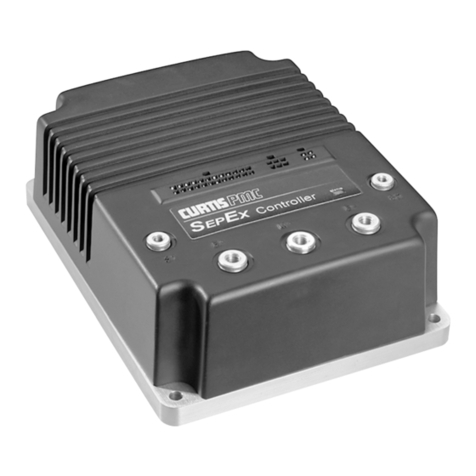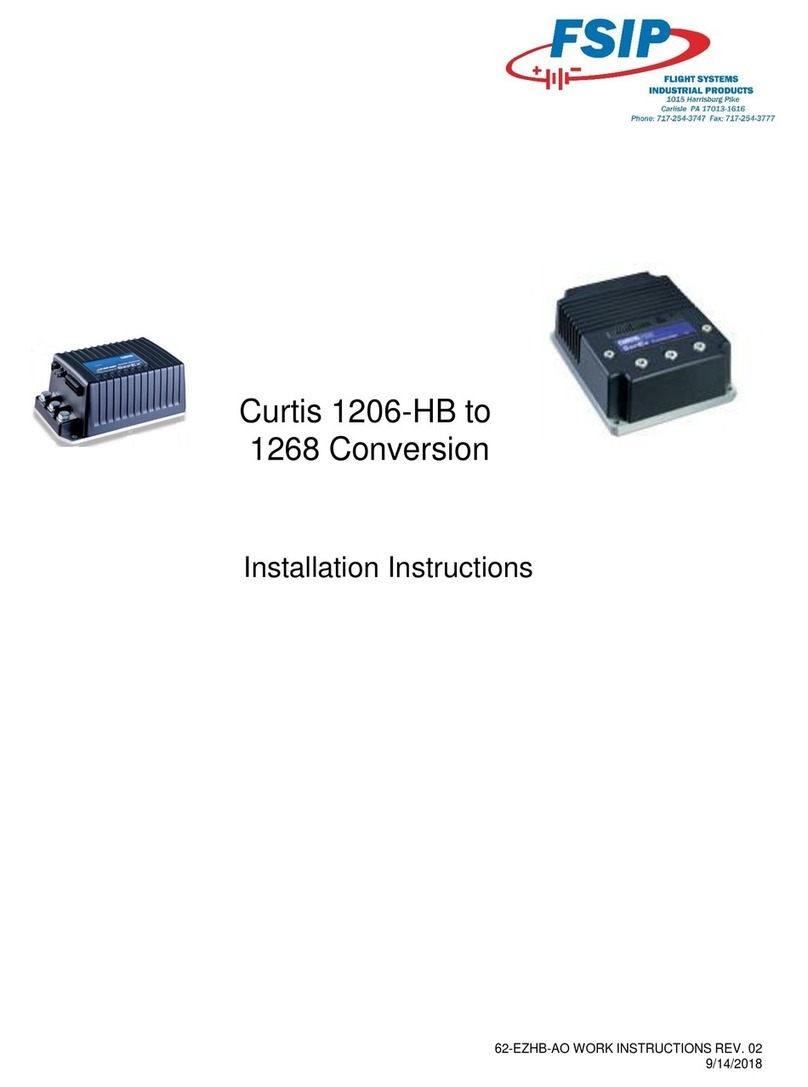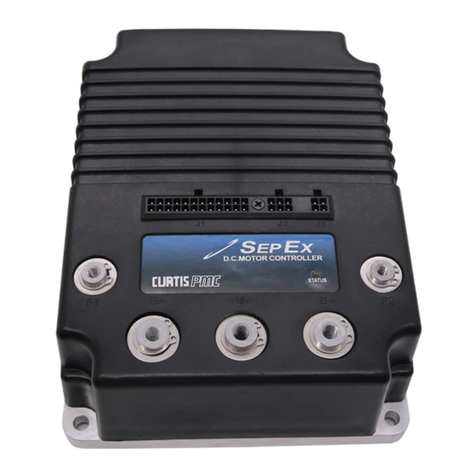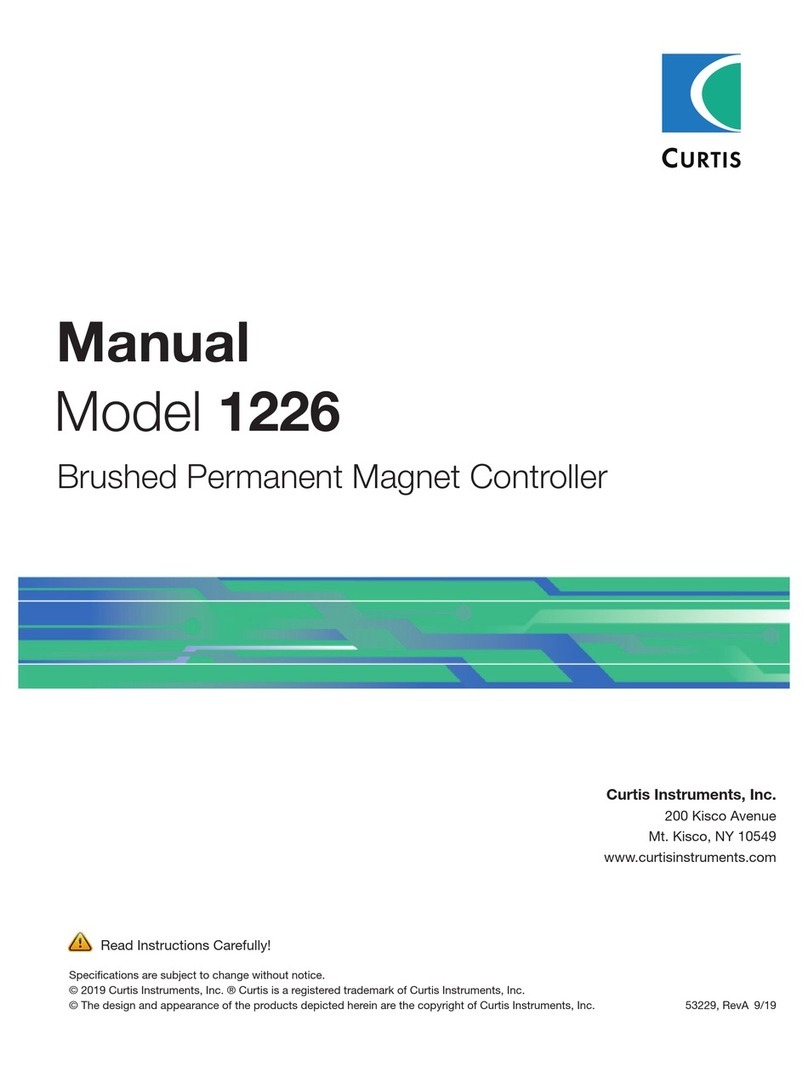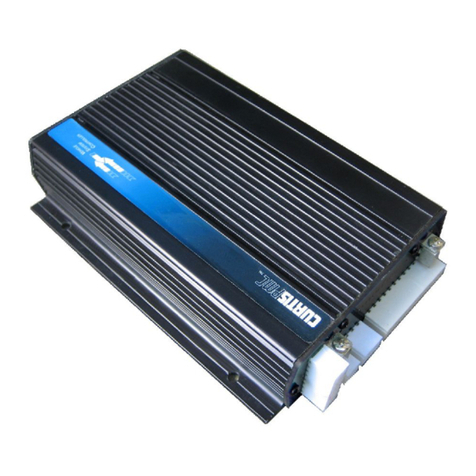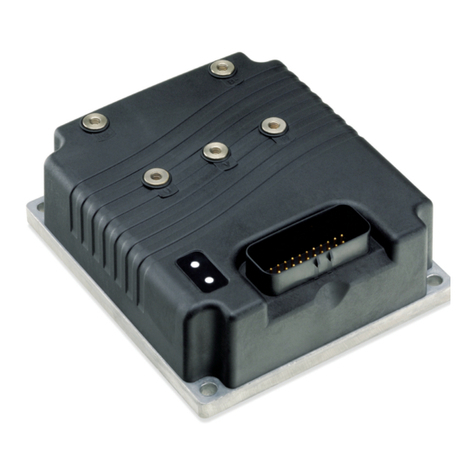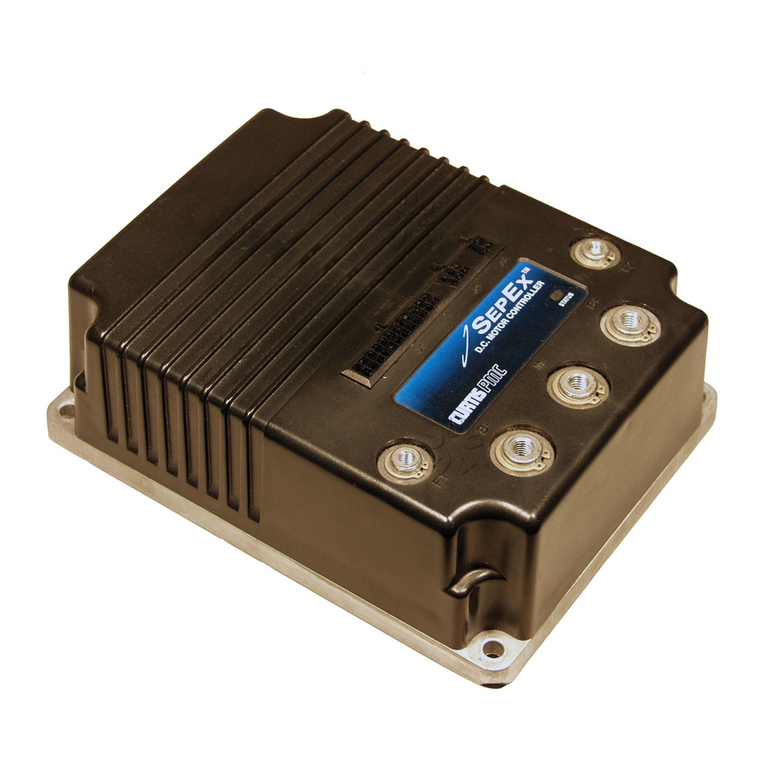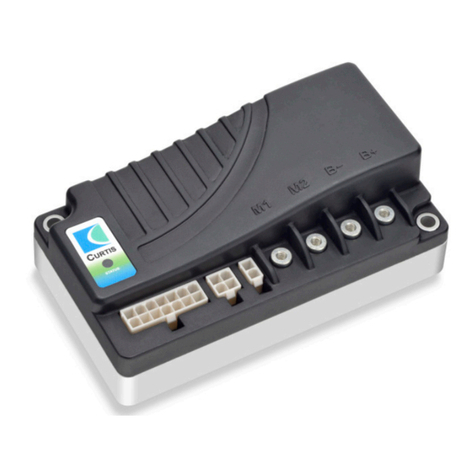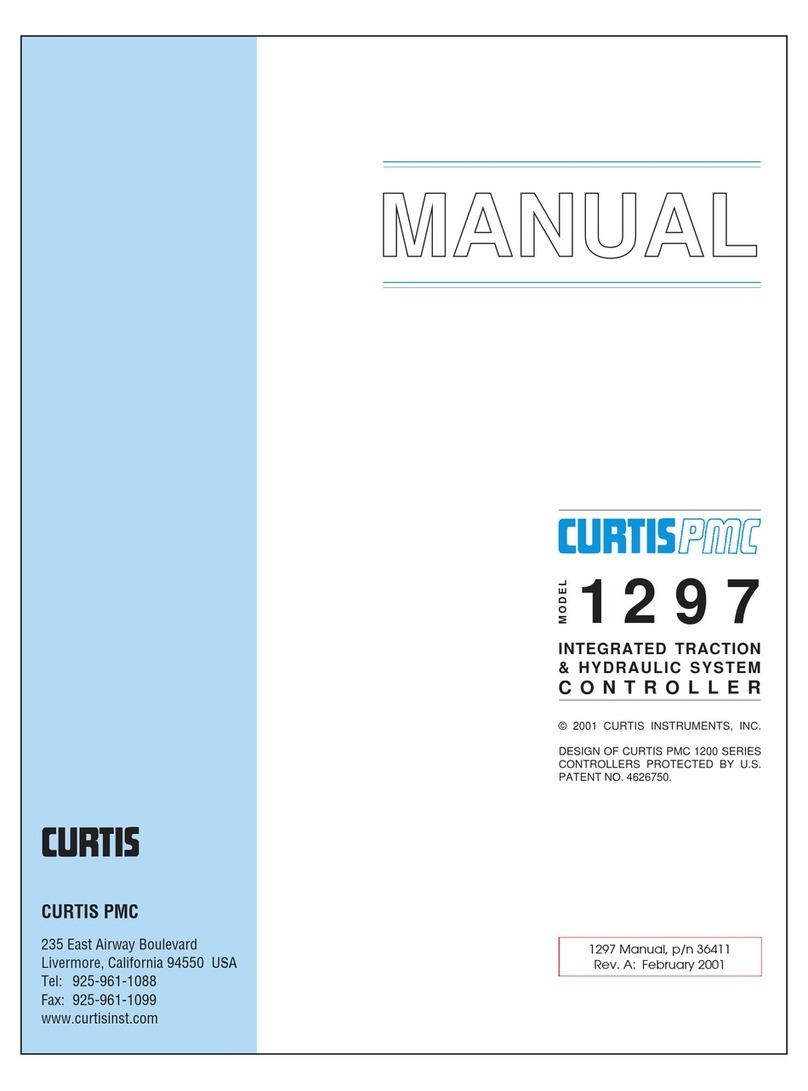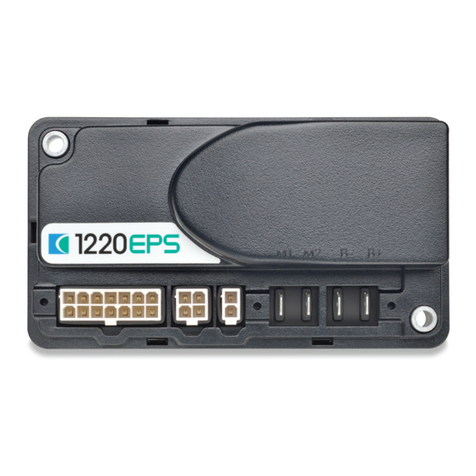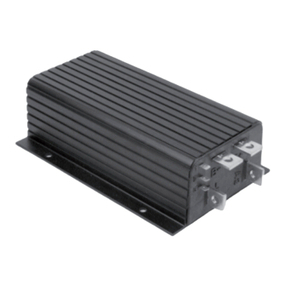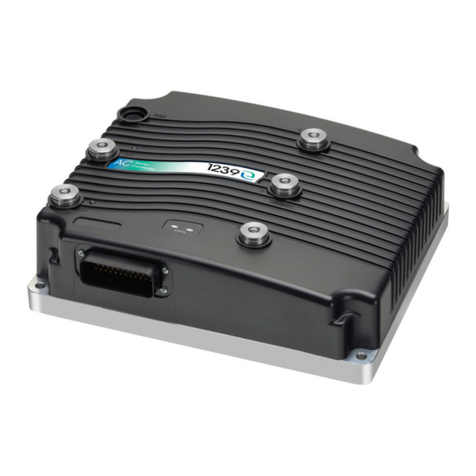
OVERVIEW
Curtis 1204M, 1205M, 1209M, and 1221M series motor controllers are the
form/fit/function replacements of the earlier 1204/1205/1209B/1221B con-
trollers, with the added functionality of being programmable—via a Curtis
handheld programmer or PC programming station. This means the controllers
can be tailored to the needs of specific applications. In addition to configuration
flexibility, use of the programmer offers diagnostic and test capability.
These controllers are the ideal solution for a variety of electric vehicle
applications, including industrial trucks, personnel carriers, material handing
vehicles, light on-road vehicles, golf cars, etc.
1
1 — OVERVIEW
Fig. 1 Curtis 1204M
and 1209M programmable
series motor controllers.
Except for their length, the
1204M and 1205M look
the same, as do the 1209M
and 1221M.
Like all Curtis controllers, the 1204M/05M/09M/21M models offer superior
operator control of motor drive performance. Features include:
3Universal logic board supports multiple throttle types and
high pedal disable (HPD) options.
3Environmental protection provided by rugged anodized
aluminum extruded housing.
3Simple mounting and wiring with push-on connectors
for control signals.
3Plated solid copper buses used for all power connections.
3Thermal protection and compensation circuit provides
constant current limit over operating range and during
under/over temperature cutback; no sudden loss of power
under any thermal conditions.
3Throttle fault protection circuitry disables controller
if throttle wires become open.
3HPD feature prevents controller operation if key is turned
on while throttle is applied.
More Features +
Curtis 1204M/1205M/1209M/1221M Manual 1
